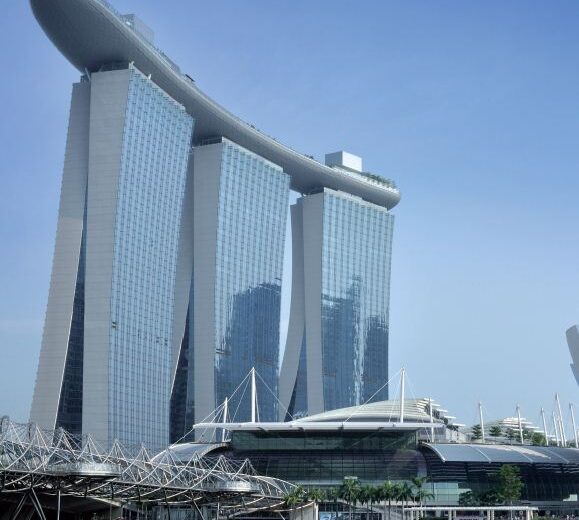During its formation lightning moves in any direction, but only until it finds a way to ground: then the path for the discharge is already created. High buildings are therefore preferred points for lightning strikes, so that risk assessment standards consider, for calculating the equivalent collection area of a structure, a surface of 3 times its height around. Besides, according to these standards, for buildings higher than 60 meters lateral impacts should also be considered.
New construction techniques have allowed the structural development of the buildings and optimized edification costs, so nowadays skyscrapers are more and more usual in cities, even in those with a high flash density. They are often emblematic buildings, placed in the main business centres and usually containing costly and sensitive equipment. The consequences of an uncontrolled lightning strike may be also dangerous for people inside the building, due to the difficulties of evacuation in case of fire and even due to the damages that overvoltages could cause on safety systems, for example for elevators.
Lightning protection standards indicate that, besides the roof, for buildings higher than 60 meters the 20% upper part should be protected with an air termination system. For high rise buildings, all the part of the building above 120m should also be provided with this lateral protection. Standards consider that a Lightning Protection Level IV is enough for the lateral air termination system, but even for this Level the technical, economical and aesthetical difficulties are important, specially in case the protection is made with Franklin rods and meshed conductors.
Protection with Early Streamer Emission (ESE) air terminals has got many advantages in these buildings, specially when there are terraces or uneven areas at the upper part . The necessary air terminals will be installed so that the roof and lateral part where lightning could strike are inside the protected volume. In case part of the endangered lateral cannot be protected, then a 20x20m and the necessary rods should cover that façade and objects on it, as with conventional protection. Besides, each ESE air terminal should have at least 4 down-conductors. It is essential that lightning current divides and that those down-conductors are interconnected (typically every 20 meters) since the distance between the impact point and the earthing is very large, so inductive and mechanical effects of lightning current are significant.
High rise buildings are often made with metallic interconnected structures that may be used as a part of the lightning protection system, even as lateral air terminals. But anyway all elements on the roof should be protected and, in case the upper part is open to the public, a local storm detector should be installed in order to avoid people staying on the roof in case of imminent danger of lightning strike.
Should you need support for any particular case, please contact our Technical Department.
